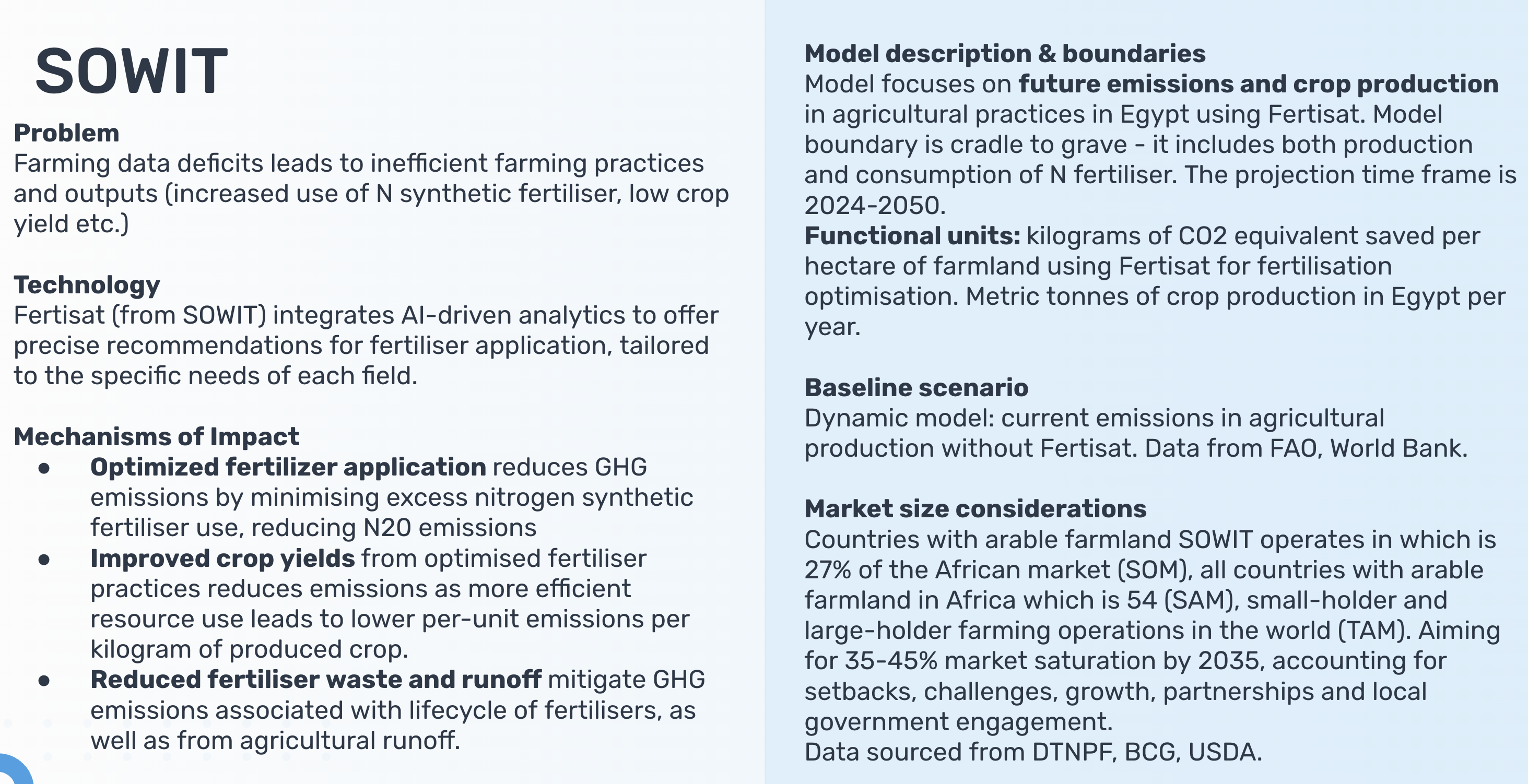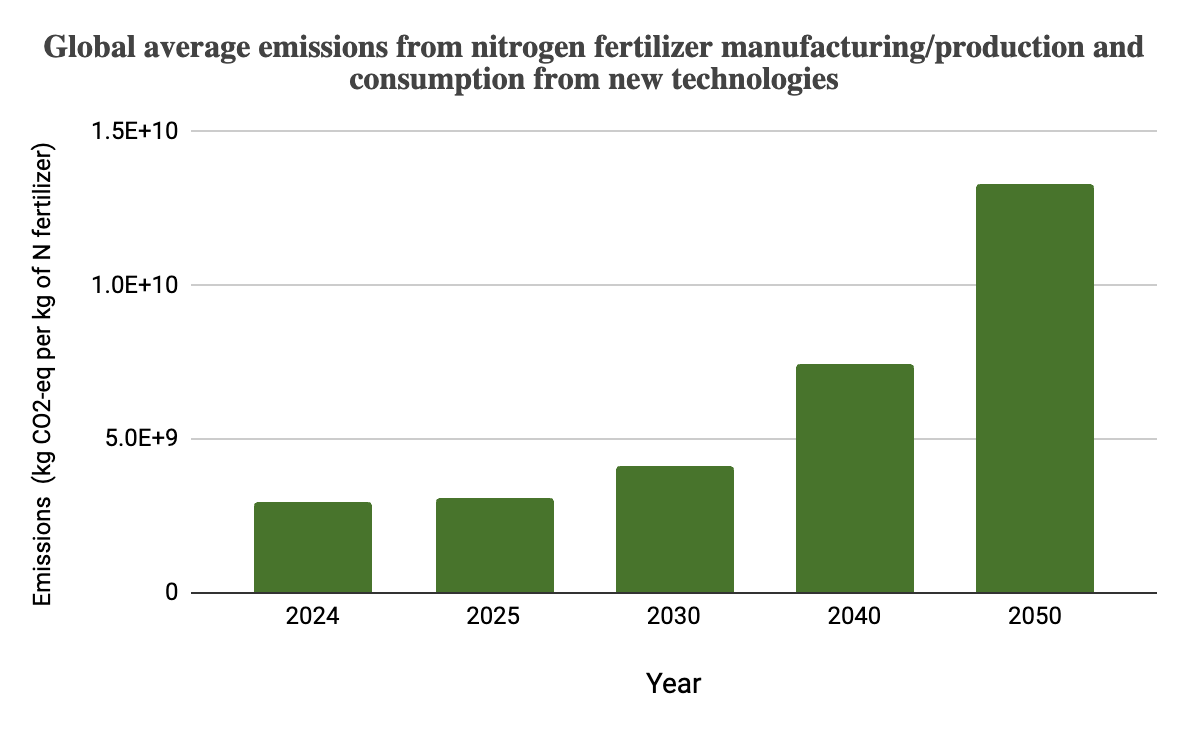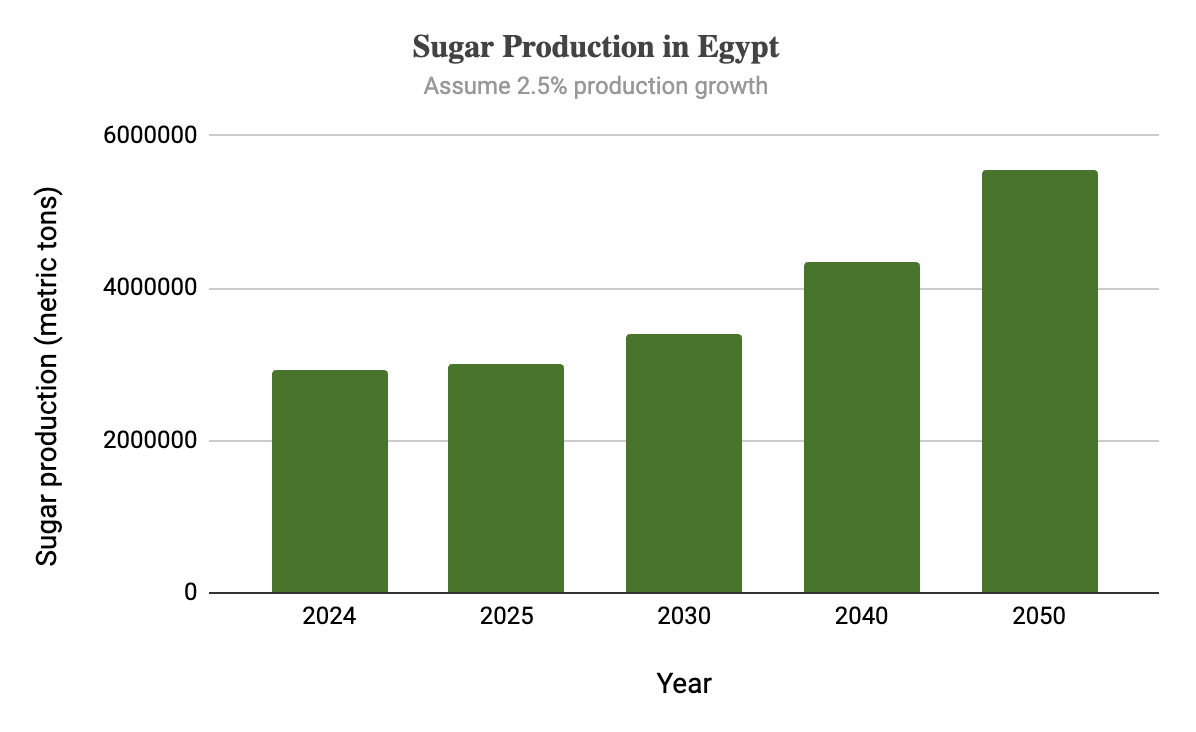Challenge
As a research fellow with Rho Impact, a startup focused on developing open standards and frameworks for modeling the transition to net zero, I worked with a cohort of fellows to forecast greenhouse gas (GHG) reductions from smart technologies. Our team analyzed SOWIT, a company that provides AI-driven decision support tools to optimize fertilizer application in agriculture, specifically through its product, Fertisat. Fertisat offers precise recommendations tailored to the needs of each field, which can help reduce greenhouse gas (GHG) emissions in several ways. My goal was to evaluate its potential for carbon sequestration in Africa—a region with significant untapped potential.
By minimizing excess nitrogen use, it cuts down on emissions of nitrous oxide (N2O), a highly potent greenhouse gas. It also boosts crop yields by improving the efficiency of fertilization, which lowers the emissions per kilogram of crop produced. Fertisat also reduces fertilizer waste and runoff, lessening the environmental impact from fertilizer production, transport, and agricultural runoff.
Approach
I developed a quantitative model to project greenhouse gas emissions reductions achievable by using SOWIT’s technology, including both baseline and solution scenarios, assumptions, and market size projections. I conducted a Life Cycle Analysis and reviewed existing literature to assess the carbon sequestration potential of various crops, such as wheat and corn, in the African market. In collaboration with a team, I also evaluated GHG intensities and model outcomes, using diverse data sources to provide actionable insights for the company’s sustainability initiatives.
The analysis focused on measuring the kilograms of CO2 equivalent saved per hectare of farmland using Fertisat. I compared two scenarios: the baseline model, which looked at emissions from current agricultural practices without Fertisat, and the solution model, which projected emissions with the use of Fertisat.
I also focused on the agricultural sector, particularly small and large-scale farms in African countries where SOWIT operates. The projection timeframe extended from 2024 to 2050, assessing the potential impact over the next several decades.
Results
The forecasted model showed significant potential for carbon and nitrogen savings. These results demonstrate the substantial impact of SOWIT’s technology on reducing GHG emissions in agricultural practices across Africa.
Citation
@online{ali2023,
author = {Ali, Elham},
title = {Rho {Impact}},
date = {2023-09-15},
url = {https://www.elhamyali.com/},
langid = {en}
}



